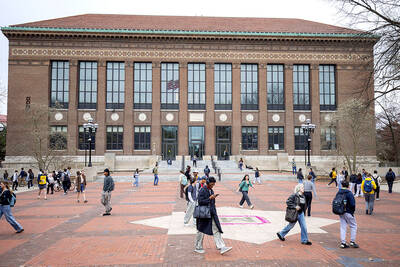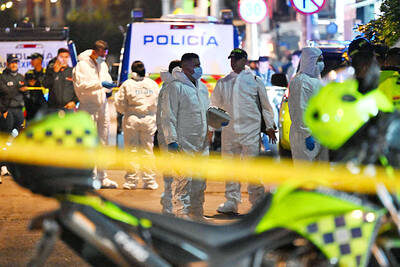When photographer Lincoln Clarkes began taking portraits of heroin-addicted women in a Vancouver drug ghetto, he realized many risked an untimely end. He did not know he was recording the last days of the victims of Canada's worst serial murders.
Five of the women he hoped to have helped with his poignant portraits of femininity amid squalor are among scores still missing.
He expects many more to be named as police examine DNA evidence.
"I just don't want to think about the final number," he said.
Pig farmer Robert "Willie" Pickton, 53, has pleaded not guilty to 15 murders, but is suspected in up to 65 cases of women who vanished from Vancouver's downtown eastside, known as Low Track. It is one of North America's worst areas for poverty, drugs, prostitution, Aids and crime.
Pickton was arrested last year and his committal hearing resumes on June 30 after a recess, while police continue excavating the grounds of his 4,5-hectare farm. He allegedly lured the women to the farm, 35km east of Vancouver's shiny skyscrapers and its seedy 10-block Low Track neighborhood. He is alleged to have entertained them in a building he called Piggy's Palace and then killed them.
Reports persist that he ground up the bodies and fed the remains to his pigs.
Clarkes, 45, once a fashion photographer in London and Paris, lives three blocks from Low Track. One summer day in 1997 he caught sight of Patricia Johnson, then a 20-year-old mother of two children she had abandoned, and a heroin addict and prostitute. They talked and Clarkes took her picture with two female friends.
When he saw the prints, he wept. He was to spend Sunday afternoons for the next five years photographing what, in a new book of the portraits of beauty in a beastly place, he called Heroines.
In 1997, a Low Track prostitute told police she had been handcuffed and stabbed by Pickton, but he claimed self-defense and was never charged.
A year later, police heard that bloody clothing, identity cards and handbags were seen at the farm. But officers were unconcerned by vanishing addicts -- even while the numbers increased each month.
Clarkes first heard of a missing woman in 1998, when he showed to her best friend a portrait of Sheila Egan, 19, who had disappeared a fortnight earlier.
"She grabbed it and clasped it to herself, and burst into tears," he recalled. "She said she knew Sheila was dead because she hadn't called. That's when I realized something was happening, but I didn't know what."
Egan never reached her twentieth birthday. With Johnson, she is among the 15 named in the murder charges.
Johnson became Clarkes' friend and left him a phone message days before vanishing in 2001. Although addicted to heroin, Egan seemed to Clarkes "so fresh and young, she should have still been in school. But she was also a bit of a fashion plate and a party girl who didn't know when to stop partying, I guess."
Another Clarkes heroine was Julie Young, 31, last seen in October 1998. She was "heroin sick" when Clarkes first saw her. "She was hurting badly for a fix, but she still managed to pose." The women loved the portraits because, he said, "here was someone with a genuine interest in them, not for sex or drugs, but for art and photography."

Swedish campaigner Greta Thunberg was deported from Israel yesterday, the Israeli Ministry of Foreign Affairs said, the day after the Israeli navy prevented her and a group of fellow pro-Palestinian activists from sailing to Gaza. Thunberg, 22, was put on a flight to France, the ministry said, adding that she would travel on to Sweden from there. Three other people who had been aboard the charity vessel also agreed to immediate repatriation. Eight other crew members are contesting their deportation order, Israeli rights group Adalah, which advised them, said in a statement. They are being held at a detention center ahead of a

A Chinese scientist was arrested while arriving in the US at Detroit airport, the second case in days involving the alleged smuggling of biological material, authorities said on Monday. The scientist is accused of shipping biological material months ago to staff at a laboratory at the University of Michigan. The FBI, in a court filing, described it as material related to certain worms and requires a government permit. “The guidelines for importing biological materials into the US for research purposes are stringent, but clear, and actions like this undermine the legitimate work of other visiting scholars,” said John Nowak, who leads field

‘THE RED LINE’: Colombian President Gustavo Petro promised a thorough probe into the attack on the senator, who had announced his presidential bid in March Colombian Senator Miguel Uribe Turbay, a possible candidate in the country’s presidential election next year, was shot and wounded at a campaign rally in Bogota on Saturday, authorities said. His conservative Democratic Center party released a statement calling it “an unacceptable act of violence.” The attack took place in a park in the Fontibon neighborhood when armed assailants shot him from behind, said the right-wing Democratic Center, which was the party of former Colombian president Alvaro Uribe. The men are not related. Images circulating on social media showed Uribe Turbay, 39, covered in blood being held by several people. The Santa Fe Foundation

NUCLEAR WARNING: Elites are carelessly fomenting fear and tensions between nuclear powers, perhaps because they have access to shelters, Tulsi Gabbard said After a trip to Hiroshima, US Director of National Intelligence Tulsi Gabbard on Tuesday warned that “warmongers” were pushing the world to the brink of nuclear war. Gabbard did not specify her concerns. Gabbard posted on social media a video of grisly footage from the world’s first nuclear attack and of her staring reflectively at the Hiroshima Peace Memorial. On Aug. 6, 1945, the US obliterated Hiroshima, killing 140,000 people in the explosion and by the end of the year from the uranium bomb’s effects. Three days later, a US plane dropped a plutonium bomb on Nagasaki, leaving abut 74,000 people dead by the